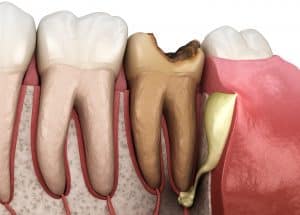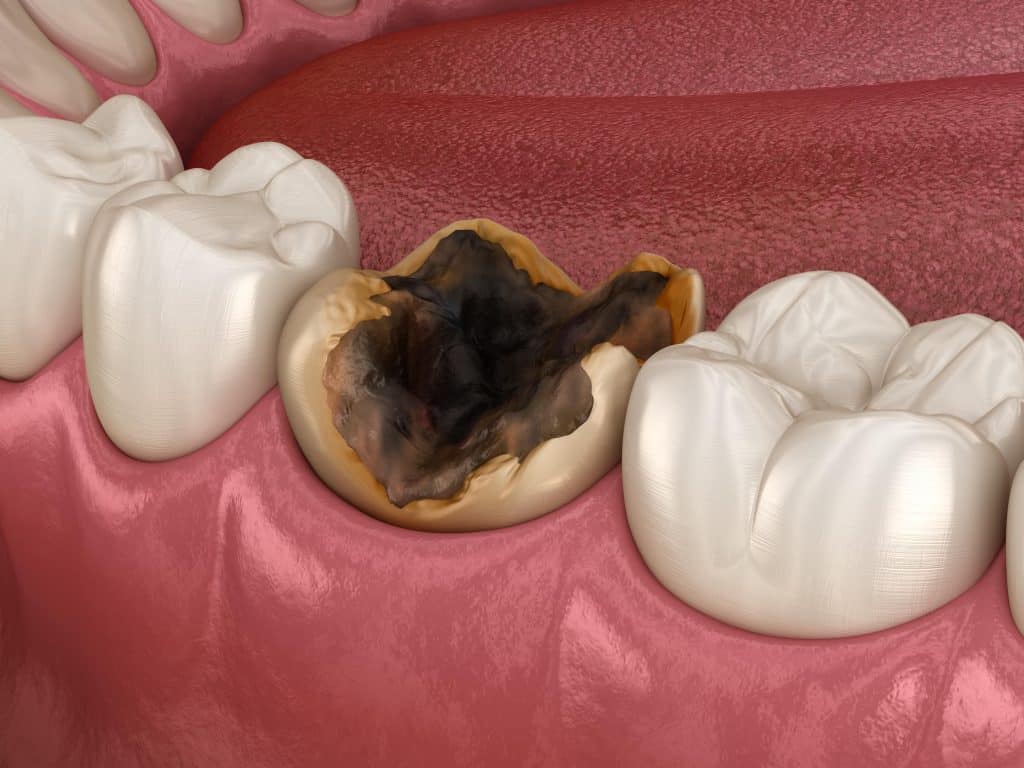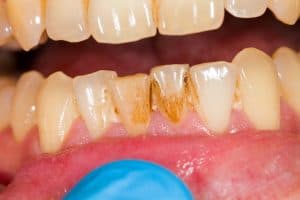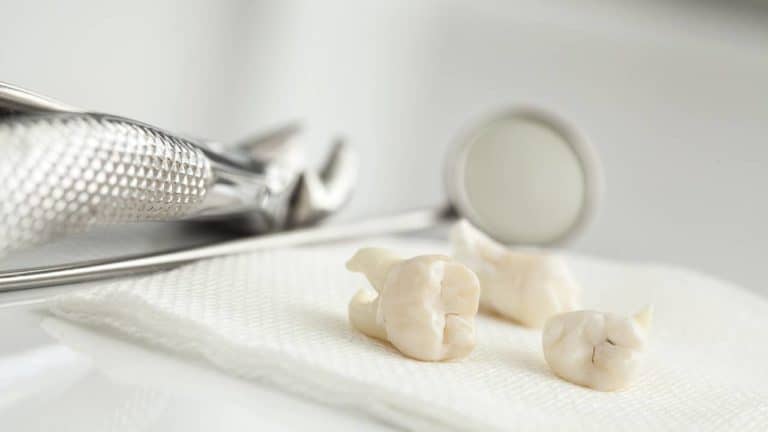The simple definition of tooth decay is where your tooth is in a state of rotting or decomposition. This means the tooth is degrading in its health to a point where it may become unrecoverable, and it can progressively damage your oral health in general.
Tooth decay is very common. It naturally occurs during old age, but it is escalated when you do not look after your teeth and consume diets containing sugars and carbohydrates.
There are five separate stages to tooth decay, so when you see early signs and consult the dentist, the health of the tooth can be restored and understanding each individual stage will help you identify the signs quicker and do something about it.
The Five Stages Of Tooth Decay
Let’s take a look at the five stages of tooth decay. This will give a clear indication of how teeth become decayed gradually.
Dental Plaque
Dental plaque is a pale sticky substance that contains bacteria and coats over your teeth. Plaque builds from food debris remaining inside the mouth and a lack of saliva. For example, if you’ve eaten a meal, but food debris remains for a sustained period, this will form itself into bacteria and coats your teeth. Eventually, this hardens into tartar, which requires an appointment at the dentist to remove. This is the first stage of tooth decay that simply requires regular brushing and flossing of teeth and an improvement in your diet to remove it.
Enamel Erosion
As the dental plaque builds, there is a risk that the surface of your tooth will break down, known as enamel erosion. The enamel dissolves when you continue to eat sugar and starchy foods. The bacteria along with this converts into acid and exposes the underlying dentin, which is the surface that protects your enamel to keep your teeth white. Once exposed, your tooth shade darkens, your enamel begins to weaken, exposing your teeth to sensitivity and introduce infection.
Cavity
As the enamel weakens, your teeth become exposed to harm. Eventually, the acid attack will cause a hole in your tooth. This is known as a dental cavity. A cavity will then require a dental filling to treat. At this point, the tooth has become exposed.
Bacterial Pulp
Your teeth have three separate parts; the enamel, the denting and the pulp. The dentin exists in the middle, but when the pulp is exposed to bacteria, pus liquid forms which cause damage to the tooth nerve. This can cause severe tooth sensitivity and this would require root canal treatment. If you’ve had root canal treatment, learn here about the foods you can eat.
Dental Abscess
The bacteria will continue to move forward to the tooth root, which is in the centre. The bacteria will build from the cavity to your gums. This will also cause gum irritation and inflammation, progressing to periodontal disease. The abscess will become so severe that the tooth becomes damaged beyond repair. This means your tooth is considered unrecoverable and will need to be extracted.

When the crack in your tooth is so severe, the tooth will need to be extracted to prevent further damage to your gums and underlying bone, otherwise, this will also impact your neighbouring teeth. A weak bone means your teeth will not stand firm in their position.
If your oral health is at any stage of tooth decay, it is important that you contact us as soon as possible so we at Ashfield Family Dental can schedule an appointment. Our team of dental experts will do our utmost best to restore your oral health and smile. Click here to get in touch with us now!





